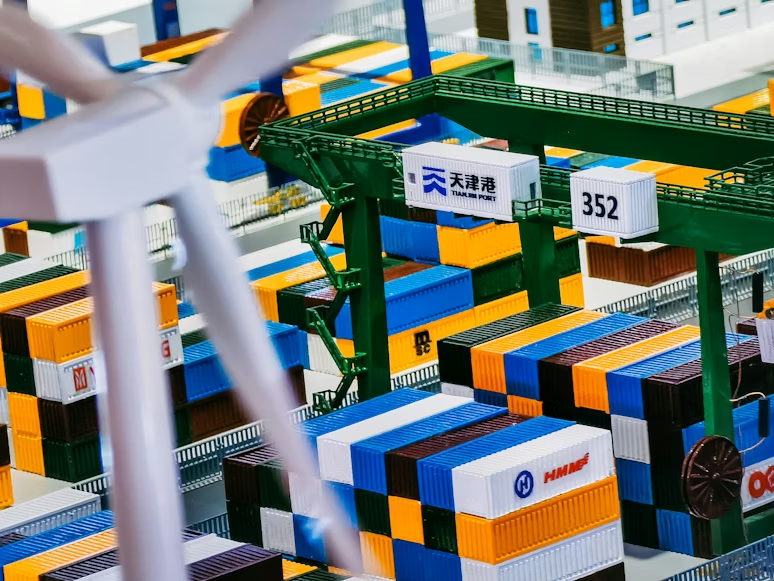It has been one year since Russia’s invasion of Ukraine triggered a surge in global food prices, and while the situation has improved, concerns remain about the stability of food prices on the global stage.
The initial food price spike occurred when Russian forces blockaded Ukraine’s Black Sea ports, disrupting shipments of cereals from one of the world’s leading exporters. In response, several countries imposed restrictions on food and fertilizer exports to safeguard their domestic food supplies. However, these measures inadvertently led to even higher prices, temporarily threatening food security in developing nations reliant on food imports.
As time has passed, many of these export restrictions have been lifted. High prices today are primarily attributed to broader global inflation trends. For example, in January, the average price of corn had risen by 31 percent compared to January 2021, while the price of wheat was up by 14 percent, and rice prices had decreased by 2 percent.
Nonetheless, the persistence of some export restrictions is a cause for concern. One year after the war’s outbreak on February 24, 2022, there remain 101 export restrictions, including quotas, licenses, and outright bans, covering more than 11 percent of 2022’s food trade. Export bans alone account for up to 3.8 percent of global food trade. Even countries with a relatively small share of food exports have kept certain restrictions in place, which may contribute to ongoing price distortions.
Figure 1: Food export restrictions and bans have leveled off but remain elevated.
The cases of wheat and corn illustrate this dynamic. In the first half of 2022, export bans imposed by major wheat exporters like Russia, which supplies nearly a third of the world’s wheat, contributed to a 25.7 percent increase in wheat prices. Corn export bans, covering 5.2 percent of global shipments, were responsible for over three-quarters of the overall 16.7 percent price increase.
Improvements have occurred since the middle of last year. Grain shipments resumed from three Ukrainian ports due to an agreement involving Ukraine, Russia, Turkey, and the United Nations. Russia and other key producers lifted export restrictions, and successful summer harvests helped stabilize prices. The European Union and Australia increased their exports to compensate for reduced Canadian shipments.
The US Department of Agriculture predicts a 5 percent increase in world food trade by June 30. However, there is a 4.5 percent expected contraction in rice shipments due to reduced exports from Vietnam, Thailand, Pakistan, and the United States. India’s ban on broken rice exports, coupled with a 20 percent duty on other rice grades, could raise global rice prices by 2 percent, and further bans by other exporters may increase prices by an additional 2.3 percent. If India enforces more restrictions, the global price of rice could rise between 4.3 percent and 12.1 percent, potentially triggering a chain reaction if other exporters follow suit.
A similar situation could arise if one of the top three exporters of corn or wheat imposes a ban, leading to a 44 percent or 8 percent price increase, respectively. These price hikes could severely impact low and lower-middle-income countries heavily dependent on food imports.
To avoid such scenarios, three essential steps can be taken:
- Exporting countries should avoid stockpiling goods and imposing export restrictions, but if necessary, these measures should be temporary, proportionate, transparent, and in line with WTO rules.
- Food-importing nations should consider reducing or eliminating import tariffs and taxes to ensure a stable food supply, both in times of abundance and scarcity. Permanent reforms enhance predictability and attract new exporters to the market.
- International organizations should enhance cooperation to provide real-time information on trade policy changes and their effects on global production and trade. Greater transparency regarding trade policy actions and global food staple supply would reduce uncertainty and the risk of escalating measures.
In times of crisis, global cooperation and communication play a vital role. The World Bank and other international organizations, including the World Trade Organization, serve as platforms for dialogue, research, and policy advice, fostering a coordinated approach to global food security.
Stay informed with supply chain news on The Supply Chain Report. Free tools for international trade are at ADAMftd.com.
#GlobalFoodPrices #UkraineWar #FoodSecurity #ExportRestrictions #WheatPrices #CornPrices #RicePrices #FoodInflation #TradePolicy #WorldTradeOrganization #USDA #GlobalTrade #FoodSupply #InternationalCooperation #GlobalHarvest #UkrainePorts #Russia #Turkey #UnitedNations #EUExports #AustraliaExports #IndiaRiceBan #FoodImports #SupplyChainStability #FoodImports #GlobalPriceRise #FoodTrade #WTO #ExportBans #AgriculturalTrade #GlobalEconomy

















